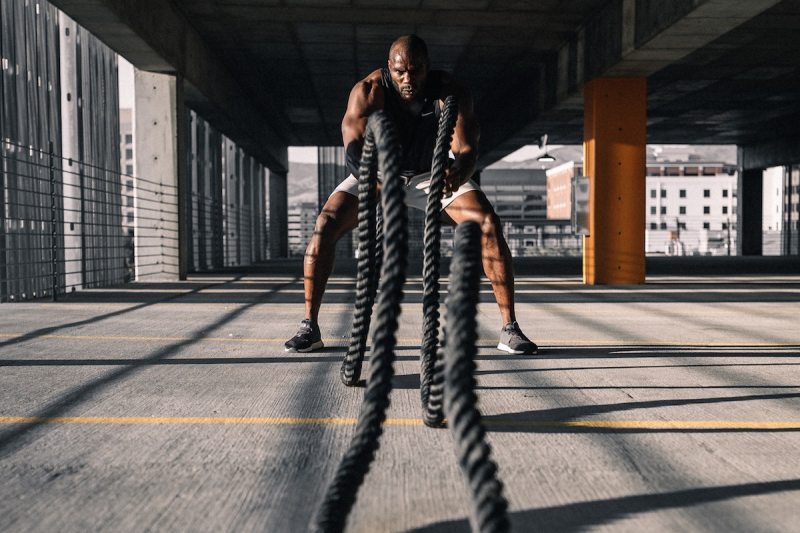
Some of the best full-body exercises you can perform require little or no equipment. Full-body exercises have plenty of benefits, and they’re simple to complete regardless of time (or the lack thereof because of work or family engagements). One of the best parts is that you don’t need to spend hours in the gym and instead, only need to invest about thirty minutes to reap great results. That’s all the time you’d need to boost your musculature’s overall stability giving you a sense of confidence and power. Full-body workouts maximize time and efficiency, targeting multiple muscle groups simultaneously so you can finish your workout faster and get back to working, living, or relaxing sooner.
The hallmark of a great full-body workout is one that improves your core while strengthening your lower and upper body. You can save more time by doing these 20-minute home workouts. And if you have another 30 minutes to spare, then you can do a full-body workout.
“Our bodies are complex organisms that function at their greatest potential when everything is working together,” said former FitOn app trainer, Vytas Baskauskas. “Full-body workouts help create synergy and harmony amongst our different parts. No real-world movement is done in a vacuum, so it is important that we train as such.”
To help squeeze in what little time you have for exercise, we spoke to Baskauskas to narrow it down to the best full-body exercises. Paired with the best HIIT workouts to build muscle and burn fat, these killer exercises provide a strong foundation for your muscles, which helps you later on when you have time to incorporate weight training into your fitness routine (and if you’re just starting out with weight training, there are other exercises, too, that are great for beginners). So throw on your favorite workout gear, lay out a mat, and let’s get to work.
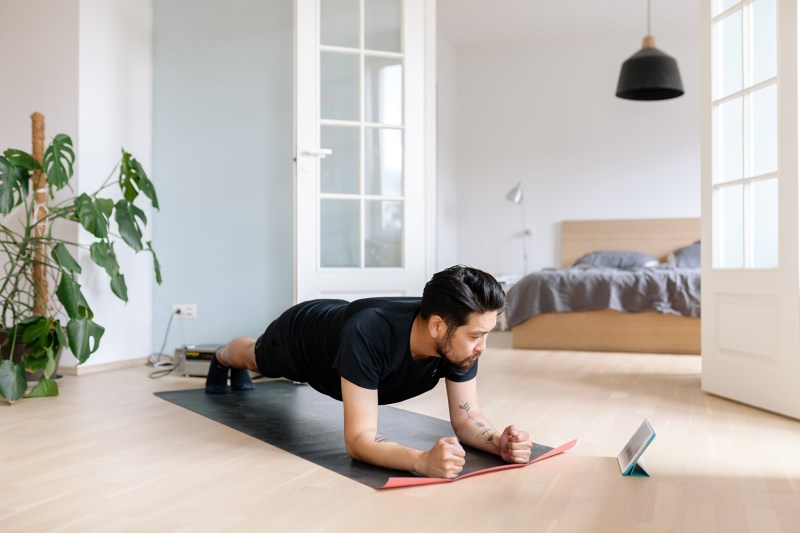
Plank
Planks are one of the best ab workouts for targeting the upper and lower body as well as firing up both the upper and lower core. When planking on your elbows, your biceps and shoulders are holding up most of your body weight while your core helps stabilize. Baskauskas calls planks the “ultimate low-impact full-body pose,” and we couldn’t agree more.
- Targeted muscles: Abs, back, biceps, and shoulders
- Equipment needed: None
- Sets: 3 sets of 30-second holds
- Execution: Hold your body in a pushup position on your forearms, engaging your core. No sticking your butt in the air!

Burpee
One of the best overall bodyweight exercises you can perform is the burpee. It is simple and effective, and if you do more than a few, they can be a grueling mental challenge. The burpee can help you not only build strength, but it can also help you blast body fat as it is often used in cardio protocols as well.
- Targeted muscles: Chest, back, core, legs, and arms
- Equipment needed: None
- Sets: 3 sets of 10-20 reps
- Execution:
- Start by assuming an athletic position, on the balls of your feet, shoulder width apart
- Squat down toward the ground, placing your hands right outside of your starting stance
- Jump (or step) your feet backward, transitioning into the top position for a pushup
- Perform a pushup
- Jump (or step) your feet back toward your hands
- Rise back to starting position
- Upon fully rising, jump towards the ceiling, for full arm extension
- That is one (1) full burpee
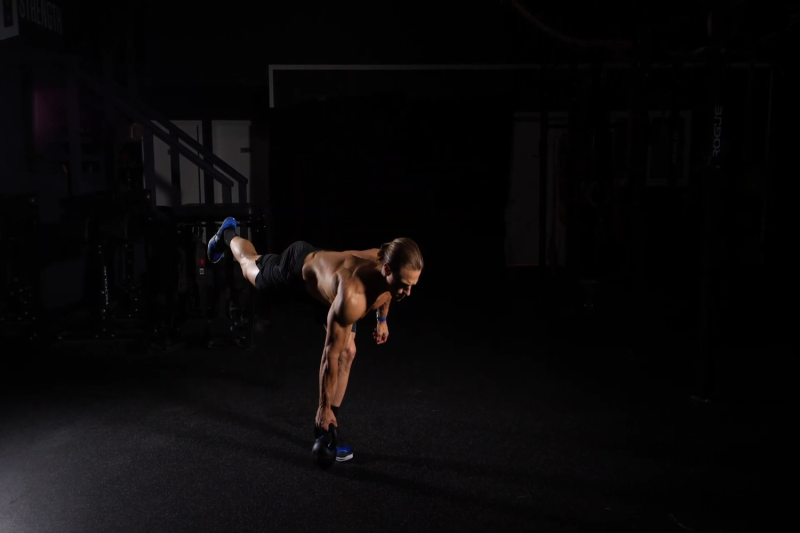
Single-leg deadlift
We love a good kettlebell exercise, and Baskauskas describes this one as a “symphony of hip stability, core strength, and breath awareness.” Excellent for hamstring mobility, deadlifts help to build power in almost every muscle in your lower body. This variation of the classic deadlift targets a single leg using bodyweight alone, which helps improve balance and strength.
- Targeted muscles: Back, core, legs, and arms
- Equipment needed: Kettlebell
- Sets: 3 sets of 10 slow reps
- Execution: Standing with your feet hip-width apart and parallel, lean forward at the hip, shifting your body weight onto one leg and letting the other leg hinge behind you until your body forms a “T” shape. Don’t hunch or arch, and go slow.
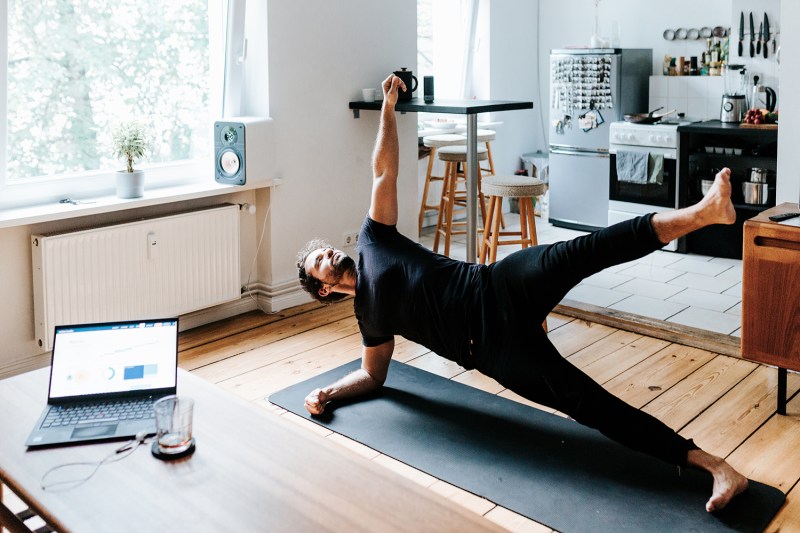
Side plank
This plank variation is lateral strength at its finest. It strengthens your obliques and core without stressing your back while improving the balance and overall endurance of your front and back abdominal muscles.
- Targeted muscles: Abs, back, legs, and obliques
- Equipment needed: None
- Sets: 3 sets of 30-second holds
- Execution: Start on your side with your feet together. On one forearm, engage your core and lift your hips until your body creates a straight line. Be sure to make it a full-body pose, keeping the shoulders broad and tailbone tucked in.
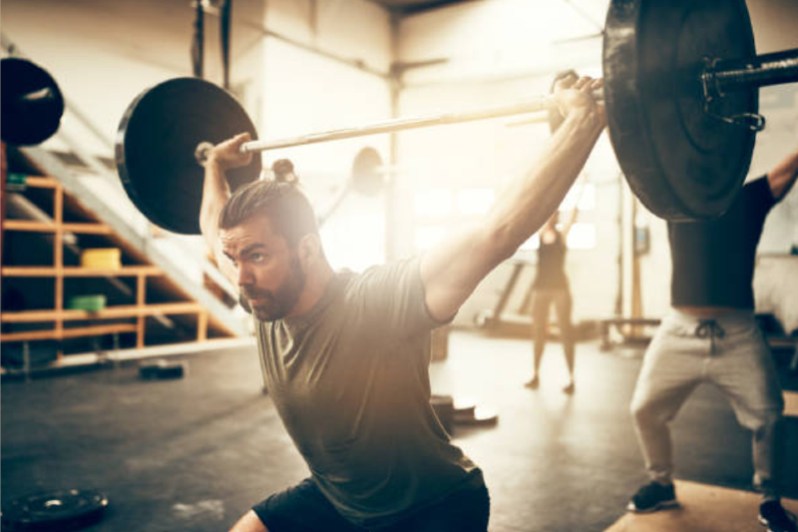
Overhead squats
Overhead squats are the epitome of a total-body exercise. Reaching the arms overhead while we squat is no small feat, especially when trying to avoid arching or rounding. If you’re new to this move, try it with light resistance until you master proper form, as this one can feel slightly awkward at first.
- Targeted muscles: Glutes, quadriceps hamstrings, upper back, shoulders, and core
- Equipment needed: Barbell and plate weights
- Sets: 3 sets of 10
- Execution: Begin standing with your legs shoulder-width apart. Hold the barbell on your upper back, and with your elbows underneath the bar, drive the barbell upward overhead while dropping into a squat position, making a “Y” with your body. Repeat.
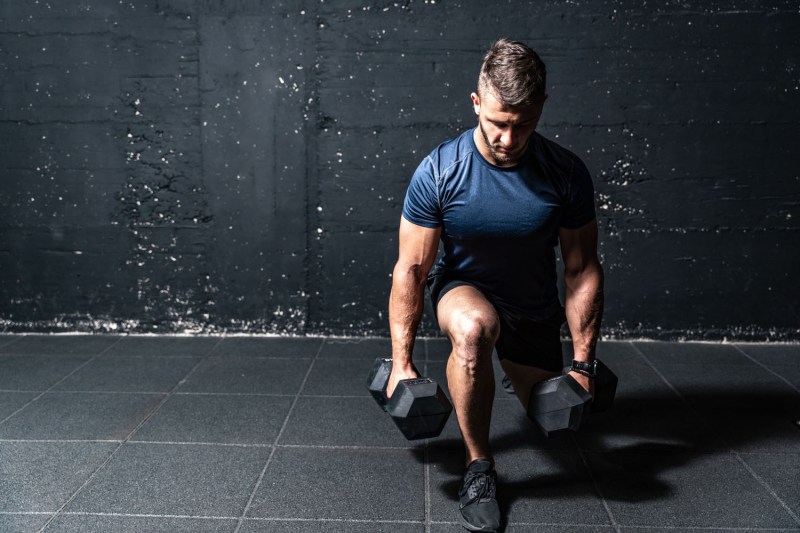
Split squats
This targeted movement is a unilateral leg exercise that increases lower-body strength, builds muscle, and improves balance. The split squat also helps with mobility and flexibility, helping you squat lower and get into that deep range of motion that fires up those quads.
- Targeted muscles: Quadriceps, glutes, and core
- Equipment needed: None
- Sets: 3 sets of 15
- Execution: Get into a standard lunge and stay there, squatting up and down, bending both knees (get low) on an inhale, and slowly straightening both legs on the exhale. Once you have that down, do it without tilting your pelvis forward and backward. Use your core to stabilize.
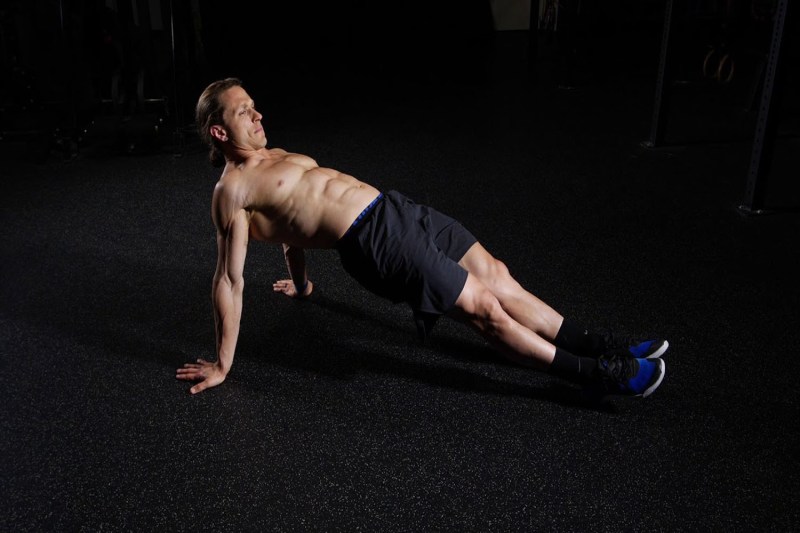
Reverse plank
This one move has all the benefits and fun of the standard plank, except on the posterior side of your body. The reverse plank targets the often-ignored muscles in a totally unique way. These posterior muscles are important in weight training and sports but rarely get any attention in isolated exercises.
- Targeted muscles: Lower back, obliques, glutes, and hamstrings
- Equipment needed: None
- Sets: 3 sets of 30-second holds
- Execution: From a sitting position, place your heels on the ground in front of you and your hands directly under your shoulders. Turn the hands out to the sides and flex the feet, lifting the hips high. Allow your head to look up.

Sumo squats
Sumo squats differ from regular squats in that they place more emphasis on the inner thigh adductors, which move your legs toward your body (though they’re both great squat exercises for leg day). It’s also a challenge for the core because you’re putting your body in a new alignment, and it needs stability to keep from rocking forward or backward.
- Targeted muscles: Glutes, quads, hamstrings, hip flexors, and calves
- Equipment needed: None
- Sets: 3 sets of 15 reps
- Execution: Spread the legs about a foot wider than from a normal squat. When squatting down, try not to stick your butt out. Let the knees spread wide and stay vertical with your torso. Drive through the floor, squeeze the glutes to stand up, and keep those knees tracking wide.
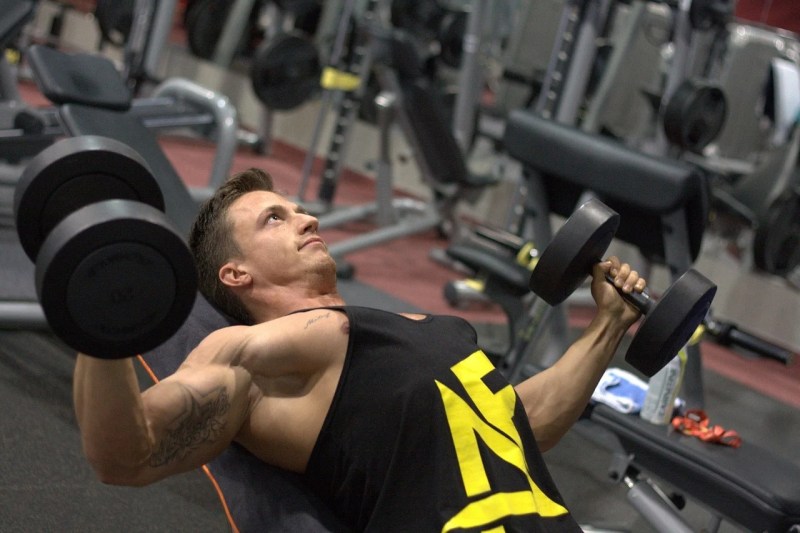
5 ways to make your workout more challenging
- Add reps: Increase the number of reps in each set to challenge your muscles, especially when you have limited access to weights.
- Add sets: Make your full-body workouts tougher by increasing the number of sets for specific exercises. This provides a new challenge for muscle adaptation and growth.
- Increase frequency: Elevate the difficulty of your workouts by training each body part more frequently. Increasing the total weekly volume promotes overload and growth.
- Add pauses: Introduce pauses or pulses to your workout during repetitions to increase muscle tension. This requires more effort from your muscles while reducing stress on joints and connective tissue.
- Don’t alternate reps: When executing unilateral movements, avoid alternating between sides. Instead, complete all reps on one side before switching. This intensifies time under tension and increases metabolic stress, which makes the exercise more challenging.
These strategies will ensure your progress and effectively challenge you to get the absolute best full-body workouts.
Sometimes less is more. Full-body exercises are just that, requiring little to no equipment to get amazing results. If equipment is available, then adding weight to any of these exercises is a great way to further challenge yourself, too.



